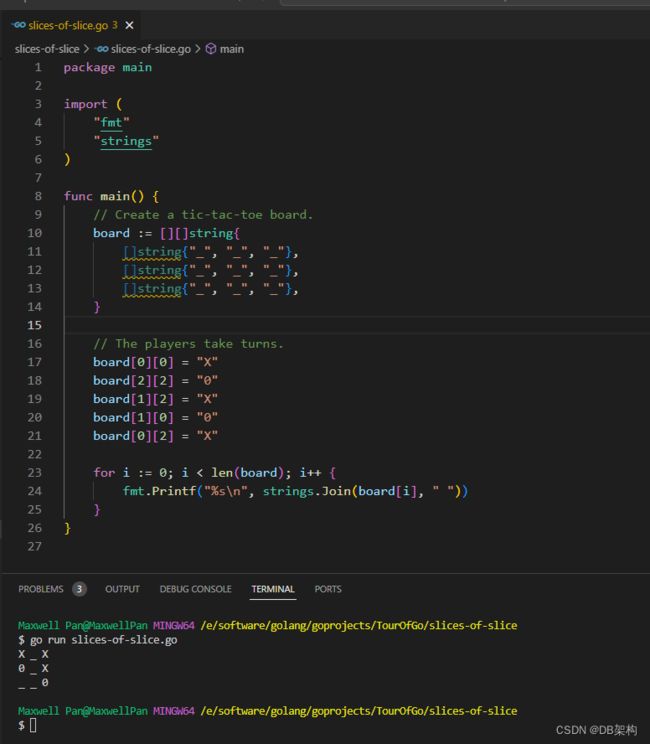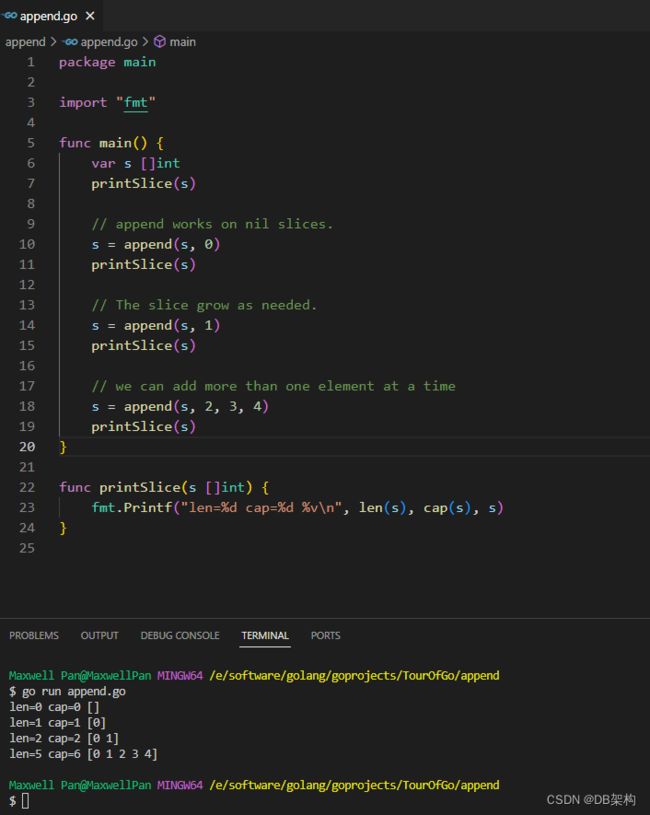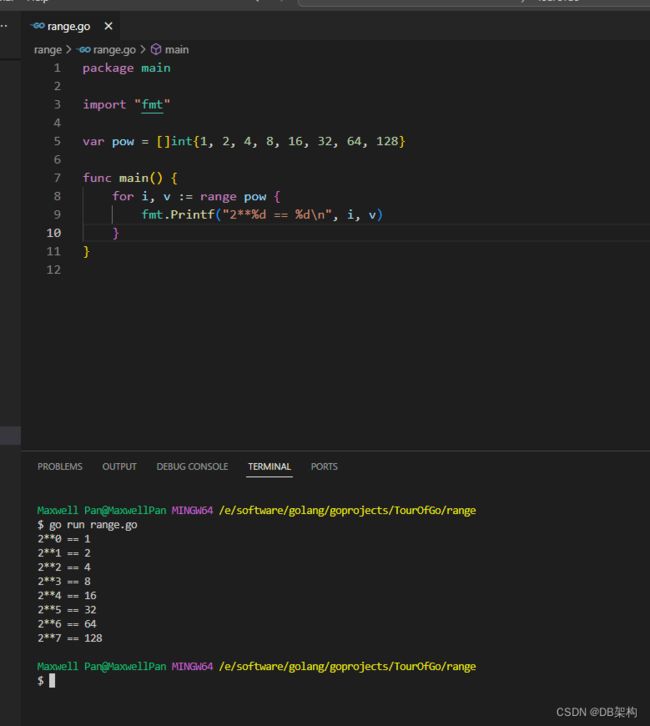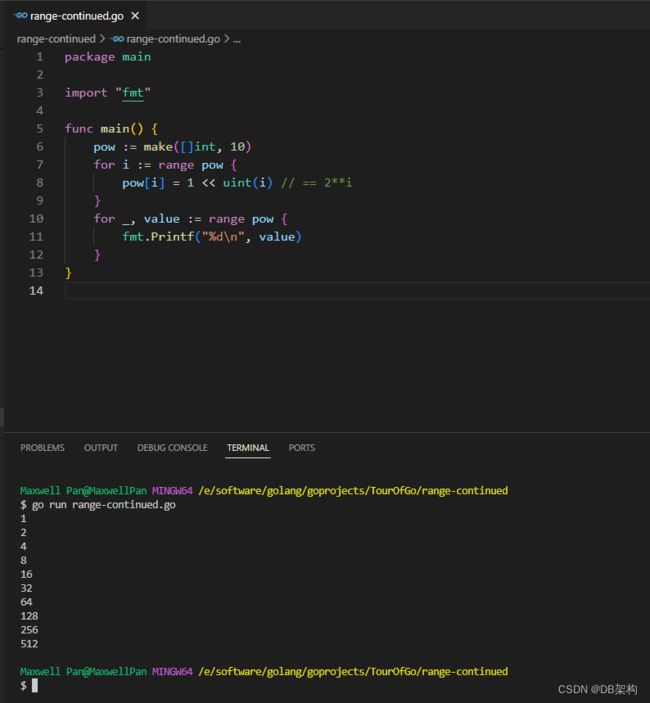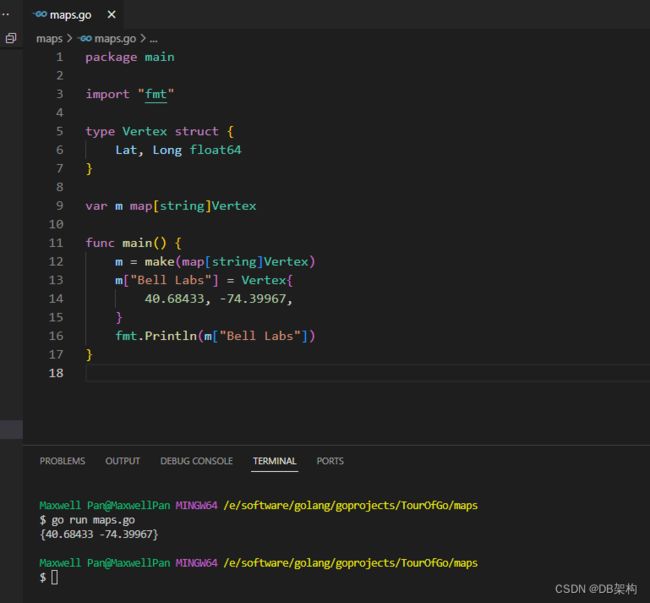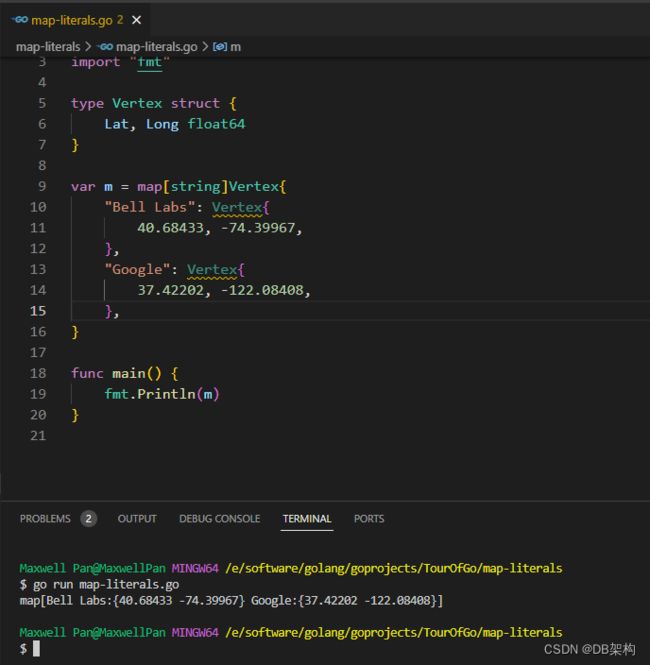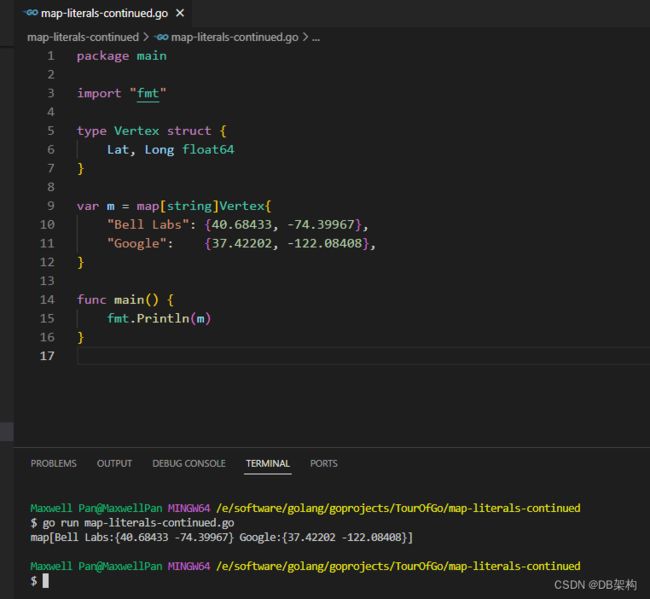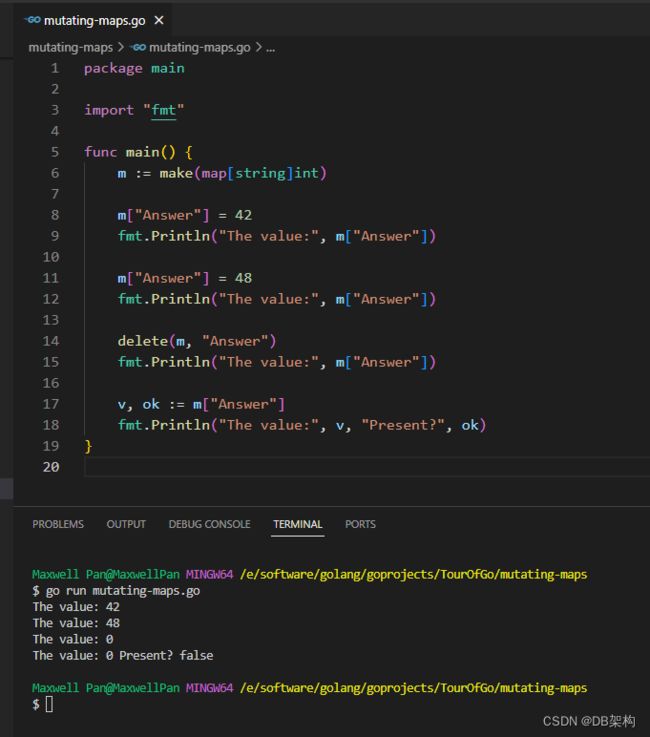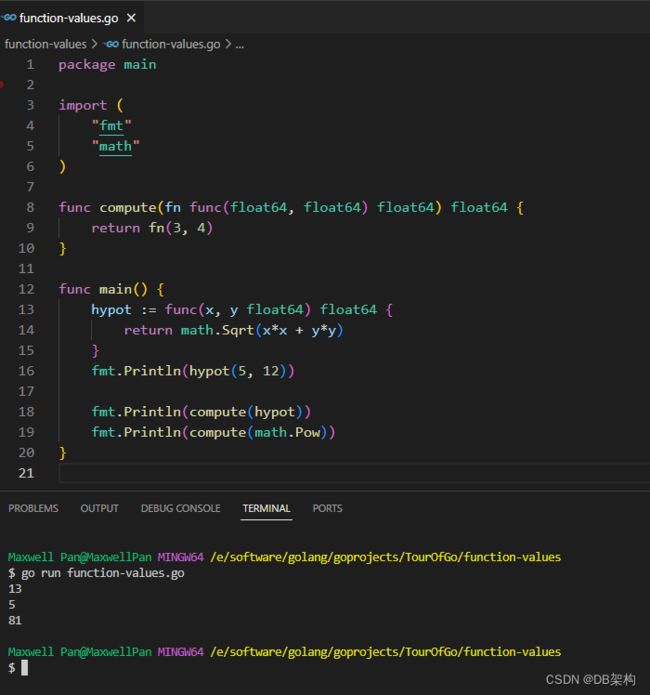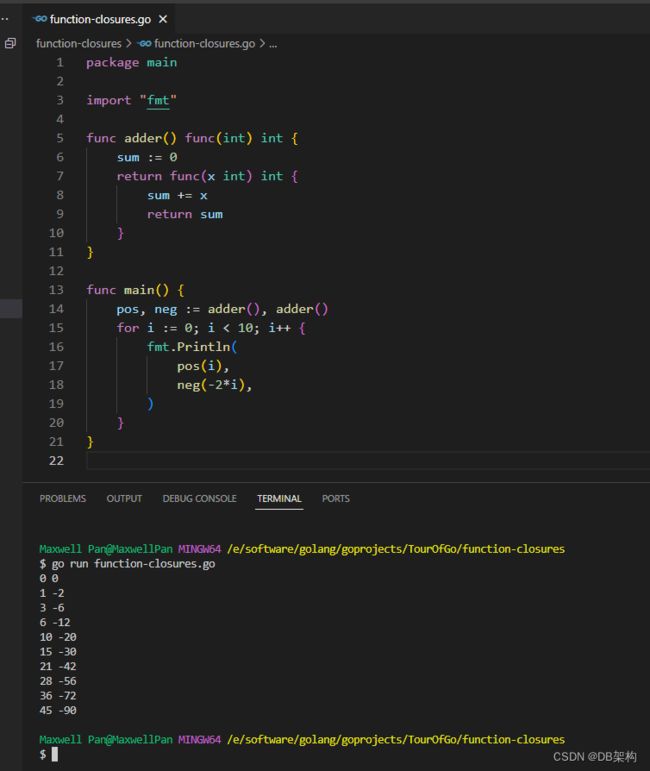More types: structs, slices, and maps Part3
1.Slices of slices
Slices can contain any type, including other slices.
package main
import (
"fmt"
"strings"
)
func main() {
// Create a tic-tac-toe board.
board := [][]string{
[]string{"_", "_", "_"},
[]string{"_", "_", "_"},
[]string{"_", "_", "_"},
}
// The players take turns.
board[0][0] = "X"
board[2][2] = "0"
board[1][2] = "X"
board[1][0] = "0"
board[0][2] = "X"
for i := 0; i < len(board); i++ {
fmt.Printf("%s\n", strings.Join(board[i], " "))
}
}
2.Appending to a slice
It is common to append new elements to a slice, and so Go provides a built-in append function. The documentation of the built-in package describes append.
func append(s []T, vs ...T) []T
The first parameter s of append is a slice of type T, and the rest are T values to append to the slice.
The resulting value of append is a slice containing all the elements of the original slice plus the provided values.
If the backing array of s is too small to fit all the given values a bigger array will be allocated. The returned slice will point to the newly allocated array.
package main
import "fmt"
func main() {
var s []int
printSlice(s)
// append works on nil slices.
s = append(s, 0)
printSlice(s)
// The slice grow as needed.
s = append(s, 1)
printSlice(s)
// we can add more than one element at a time
s = append(s, 2, 3, 4)
printSlice(s)
}
func printSlice(s []int) {
fmt.Printf("len=%d cap=%d %v\n", len(s), cap(s), s)
}
3.Range
The range form of the for loop iterates over a slice or map.
When ranging over a slice, two values are returned for each iteration. The first is the index, and the second is a copy of the element at that index.
package main
import "fmt"
var pow = []int{1, 2, 4, 8, 16, 32, 64, 128}
func main() {
for i, v := range pow {
fmt.Printf("2**%d == %d\n", i, v)
}
}
4.Range continued
You can skip the index or value by assigning to _.
for i, _ := range pow for _, value := range pow
If you only want the index, you can omit the second variable.
for i := range pow
package main
import "fmt"
func main() {
pow := make([]int, 10)
for i := range pow {
pow[i] = 1 << uint(i) // == 2**i
}
for _, value := range pow {
fmt.Printf("%d\n", value)
}
}
5.Maps
A map maps keys to values.
The zero value of a map is nil. A nil map has no keys, nor can keys be added.
The make function returns a map of the given type, initialized and ready for use.
package main
import "fmt"
type Vertex struct {
Lat, Long float64
}
var m map[string]Vertex
func main() {
m = make(map[string]Vertex)
m["Bell Labs"] = Vertex{
40.68433, -74.39967,
}
fmt.Println(m["Bell Labs"])
}
6.Map literals
Map literals are like struct literals, but the keys are required.
package main
import "fmt"
type Vertex struct {
Lat, Long float64
}
var m = map[string]Vertex{
"Bell Labs": Vertex{
40.68433, -74.39967,
},
"Google": Vertex{
37.42202, -122.08408,
},
}
func main() {
fmt.Println(m)
}
7.Map literals continued
If the top-level type is just a type name, you can omit it from the elements of the literal.
package main
import "fmt"
type Vertex struct {
Lat, Long float64
}
var m = map[string]Vertex{
"Bell Labs": {40.68433, -74.39967},
"Google": {37.42202, -122.08408},
}
func main() {
fmt.Println(m)
}
8.Mutating Maps
Insert or update an element in map m:
m[key] = elem
Retrieve an element:
elem = m[key]
Delete an element:
delete(m, key)
Test that a key is present with a two-value assignment:
elem, ok = m[key]
If key is in m, ok is true. If not, ok is false.
If key is not in the map, then elem is the zero value for the map's element type.
Note: If elem or ok have not yet been declared you could use a short declaration form:
elem, ok := m[key]
package main
import "fmt"
func main() {
m := make(map[string]int)
m["Answer"] = 42
fmt.Println("The value:", m["Answer"])
m["Answer"] = 48
fmt.Println("The value:", m["Answer"])
delete(m, "Answer")
fmt.Println("The value:", m["Answer"])
v, ok := m["Answer"]
fmt.Println("The value:", v, "Present?", ok)
}
9.Function values
Functions are values too. They can be passed around just like other values.
Function values may be used as function arguments and return values.
package main
import (
"fmt"
"math"
)
func compute(fn func(float64, float64) float64) float64 {
return fn(3, 4)
}
func main() {
hypot := func(x, y float64) float64 {
return math.Sqrt(x*x + y*y)
}
fmt.Println(hypot(5, 12))
fmt.Println(compute(hypot))
fmt.Println(compute(math.Pow))
}
10.Function closures
Go functions may be closures. A closure is a function value that references variables from outside its body. The function may access and assign to the referenced variables; in this sense the function is "bound" to the variables.
For example, the adder function returns a closure. Each closure is bound to its own sum variable.
package main
import "fmt"
func adder() func(int) int {
sum := 0
return func(x int) int {
sum += x
return sum
}
}
func main() {
pos, neg := adder(), adder()
for i := 0; i < 10; i++ {
fmt.Println(
pos(i),
neg(-2*i),
)
}
}
